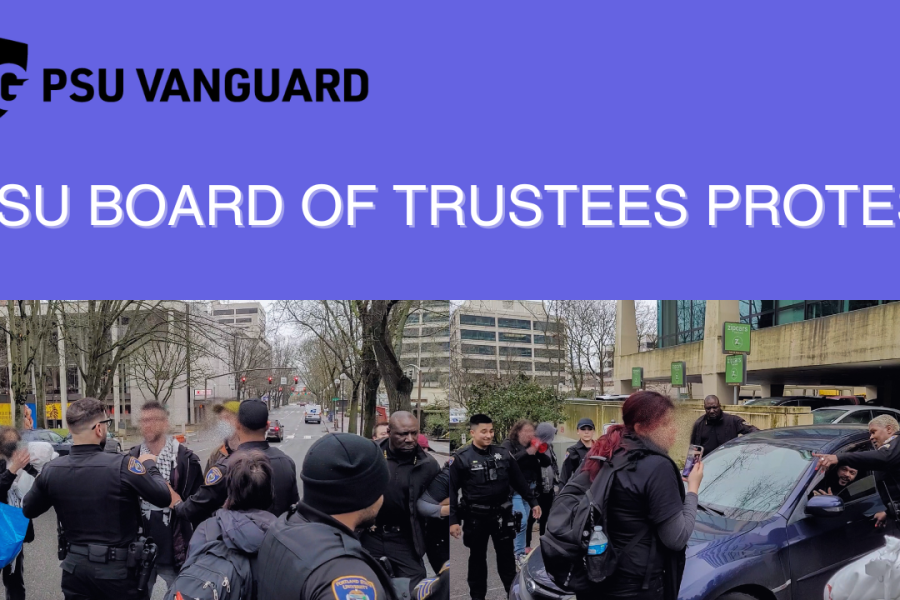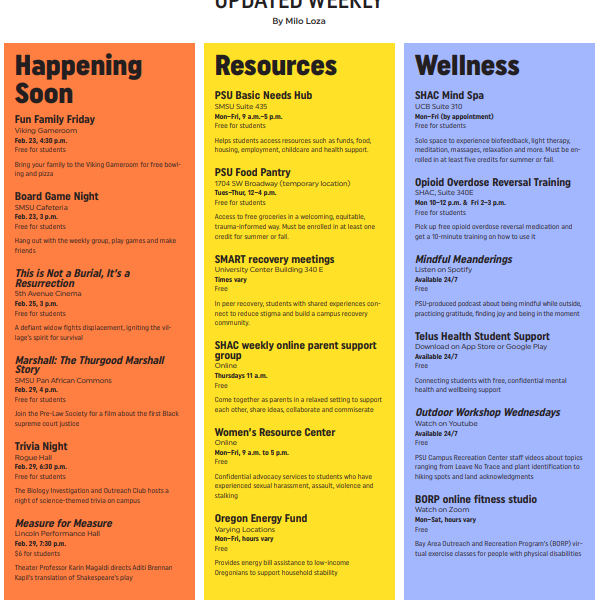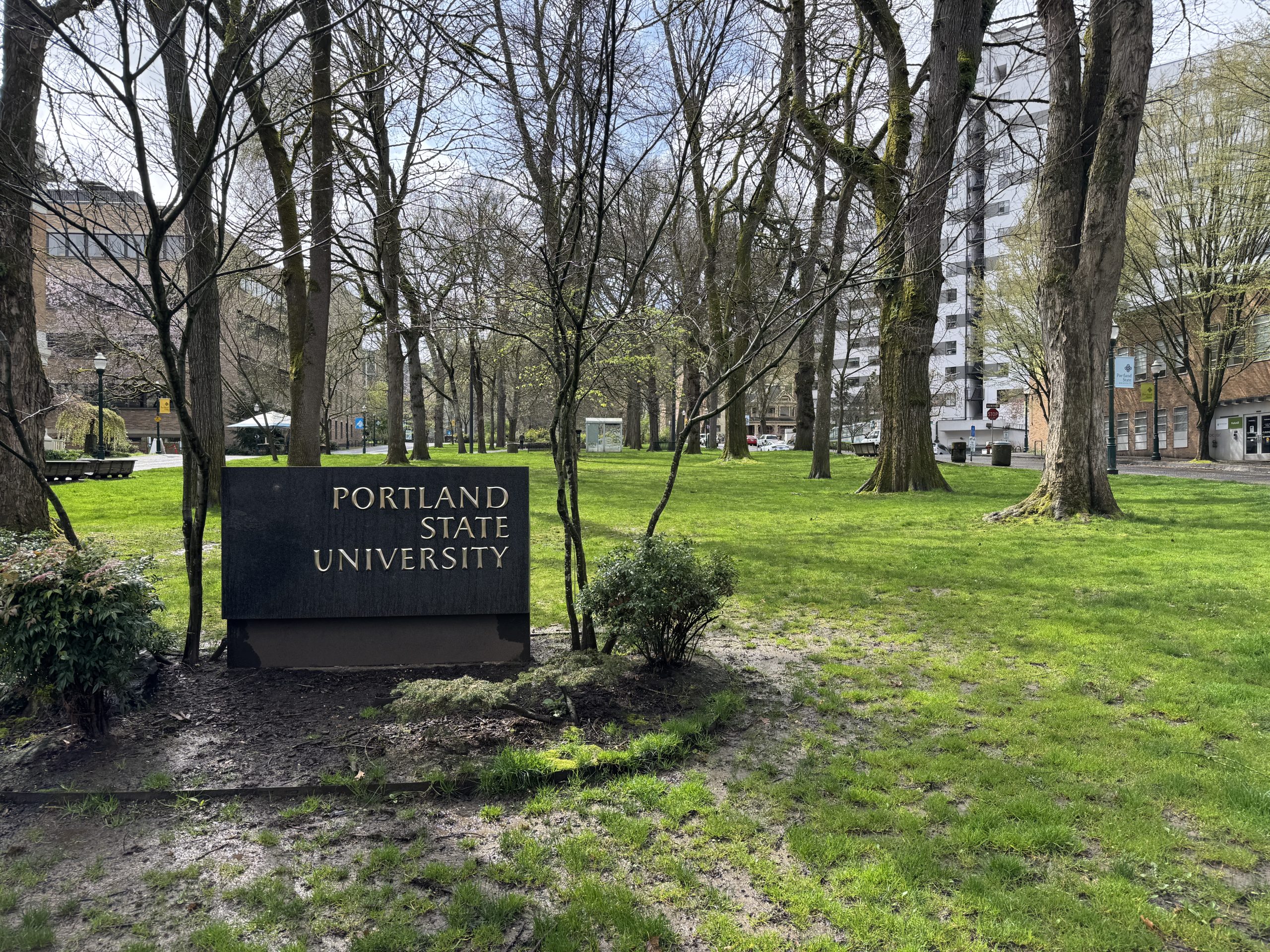Portland State’s Homelessness Research & Action Collaborative (HRAC) released its annual report on Oregon’s houselessness on Feb. 2, shedding light on the ongoing and increasing crisis affecting the state.
While HRAC is still gathering the full and forthcoming report of specifics of PSU student houselessness, advocates have highlighted the removal of emergency Supplemental Nutrition Assistance Program (SNAP) benefits as a contributing factor to the challenges faced by students in meeting their basic needs.
The HRAC annual report results
The statewide HRAC report shows that houselessness has increased by 8.2% from 2022. It also reported that the gap between sheltered and unsheltered houseless has risen.
“The lack of access to housing [is] what’s driving these high rates [and] high numbers that we’re seeing,” said Jacen Greene, the Assistant Director for HRAC. “And then the lack of shelter beds is what’s creating a higher proportion of unsheltered homelessness versus sheltered homelessness.”
Oregon Housing and Community Services (OHCS) has commissioned HRAC’s research since 2021, after Senate Bill 5561 directed that the agency fund more studies on houselessness and houselessness prevention.
The PSU study, in particular, provides the agency with a ground-level perspective and offers insight into county-by-county data.
OHCS Public Information Officer Delia Hernández stated that the information helps inform decisions about allocating funds for needs-based programs, such as Emergency Housing Assistance, Oregon Eviction Diversion and Prevention Program and State Homeless Assistance Program. They then transform the data from the annual study into an interactive County Profile dashboard for users.
One statistic which the study has consistently shown throughout all three years is the state’s higher rate of houselessness for BIPOC communities compared to their white counterparts. This is despite Oregon’s predominantly white population, which is 74% in 2023 according to the United States Census Bureau.
“OHCS will also use the data on racial disparities to continue to better understand which populations need additional support and investment and to track progress towards reducing those disparities over time,” Hernández stated.
HRAC collects data from a Point-In-Time count, which is a census of people who experience both unsheltered and sheltered houselessness on a single night in January.
To enhance the accuracy, it combines that data with information from the Housing Inventory Count, which relays the total number of shelters and housing beds and the number of children in Oregon schools reported by the district as experiencing houselessness.
“There’s literally nowhere for people to go,” Greene said. “There’s no housing. There’s no shelter. So people are forced out on the street or in tents or worse.”
OHCS Director Andrea Bell acknowledged that the growth rate shown in the report lies beyond the service’s current grasp.
“While our commitment to expanding shelter beds in Oregon remains steadfast, the sobering reality is that the statewide shelter bed gap has outpaced our efforts,” Bell said. “We hold a fierce urgency to bridge this gap.”
Houselessness and children
According to this year’s report, an estimated 21,478 children enrolled in Oregon school districts experienced houselessness in 2023, equating to 3.9% of all students in the state. This is the fourth-highest recorded rate over the past 16 years.
The highest rates of pre-K-12 student houseless populations per 1,000 students are in rural counties, specifically on the coast in Lincoln and Gilliam counties and in eastern Oregon along the Columbia River and Columbia Plateau.
Greene noted that factors across the state such as a lack of housing—specifically affordable housing and fewer shelters—are particularly exacerbated in rural counties.
“I think it shows that in areas that just don’t have enough housing, which is increasingly rural parts of the state, where there aren’t enough available housing units or you might see housing units that are being converted into rentals, you’re going to have increasing rates of homelessness,” Greene said.
Meanwhile, Multnomah and Washington counties contain the largest de facto number of students K-12 experiencing houselessness, with 3,472 and 3,207 students experiencing houselessness, respectively.
PSU student impact of houselessness
Statewide reports like this one, however, do not relay the complete picture of college students experiencing houselessness. The HRAC report shows those in a shelter or on the street. It does not portray the number of students who are doubled-up—meaning sharing other people’s housing by necessity rather than choice—as it does for K-12 students.
HRAC is synthesizing data from a fall survey specific to PSU students experiencing houselessness and housing insecurity. However, during the 2022–2023 academic year, Lee Ann Phillips—the Basic Needs Navigator for PSU’s Basic Needs Hub—said she saw an increase in students who need emergency housing, noting that this is likely due to how expensive housing in Portland has become.
Greene said the results—termed the PSU Student Housing Study—should be ready in the next couple of months.
Detrimental effects of changes to SNAP eligibility
Many factors are at play regarding the high rate of houselessness in Oregon and in the PSU community. According to Phillips and Bea McGrath—the Smallwood Food Pantry General Manager—food and other basic needs insecurities may play a significant role.
Both agree that the recent changes to SNAP have exacerbated food insecurity issues on campus and possibly beyond.
In early 2023, the emergency assistance granted to those eligible for SNAP benefits was removed. This emergency assistance allowed people with SNAP to receive more money for food each month, while also expanding eligibility guidelines for applicants.
When emergency assistance ended, many people saw their SNAP benefits significantly decrease or even disappear.
Now that the expanded eligibility requirements have been removed, graduate students are no longer eligible for SNAP if they don’t meet the 20- to 30-hour-a-week work requirement, which students can partly or entirely fulfill with undergraduate coursework but not graduate coursework.
According to the BBC, 42.3 million Americans used SNAP in October 2022. Urban Institute, a progressive think tank, reported that the emergency SNAP allotments helped keep 4.2 million people out of poverty in the fourth quarter of 2021, reducing poverty by 9.6% in states with emergency allotments. Once the emergency assistance was removed, food banks nationwide experienced a significant strain due to increased users.
While no research has found a direct correlation yet, Axios Portland reported that houselessness in Portland increased 20% from 2022–2023, which falls in line with the timeline of SNAP emergency assistance removal.
Food insecurity on campus
According to McGrath, restricting and removing emergency assistance on who can receive them significantly impacted PSU students.
“The damage done by needlessly withholding these benefits likely goes much farther than food insecurity,” McGrath said. “It hurts students’ abilities to access all of their basic needs [and] the systems that provide them, as well as local businesses that benefit from students having the funds to buy the food they need.”
So far this term, McGrath said the food pantry has averaged approximately 233 visits per day, a significant increase from the average 185 daily visits during the 2023 fall term and the 110 daily visits they saw in the 2023 spring term.
Phillips said the Basic Needs Hub served 1,614 students, averaged 161 students per month and provided emergency meal vouchers to 810 students that year. Phillips said the Basic Needs Hub has also seen an increase in students using their services, but it’s possible this increase could be due to their increased visibility on campus.
Phillips said she has become aware that more students are using the food pantry since the removal of emergency SNAP benefits. Students who did keep their benefits are only allotted around $150–200 a month when they used to have around $300.
“They’ve got to supplement that somewhere, and we know that [food] prices have gone up as well,” Phillips said. “Food costs are so high right now, though. Even $150 is not going to give you a lot of groceries… We definitely have seen our numbers go up. Absolutely.”
Phillips said continued food insecurity and other basic needs concerns impacts students’ academic performance, overall mental health and sense of belonging.
“I have students in here who are really suffering and feeling like they need to drop out, because they can’t survive,” Phillips said. “They can’t meet needs. It’s every day I see students in this situation, so we have to re-evaluate how we can best bolster students’ success here.”
McGrath explained that food insecurity is stressful, especially for students already under academic pressure. They said not knowing where you will get your next meal takes a toll on one’s mental and physical health, which can affect the entire community’s well-being and is also usually connected with other forms of basic needs insecurity.
“A lack of housing can obviously lead to food insecurity, because you have no place to store your food,” McGrath said. “A lack of food can lead to avoidable disease, which over burdens our healthcare system. [The] criminalization of poverty caused by homelessness, lack of medical care and food insecurity leads to the legal system breaking down. Reductions in SNAP benefits definitely plays a role in increasing homelessness and all of the other crises we are facing with access to basic needs.”
Over the last few years, McGrath said the food pantry has received a massive amount of support from the Student Fee Committee, which allowed them to move into a newly remodeled and expanded space and serve more students. However, McGrath said much work must be done to combat basic needs insecurity at PSU.
“Unfortunately, the estimated amount of PSU students experiencing food insecurity is many times higher than the amount we are serving, so there is still a lot of work to do if we are serious about eliminating hunger on campus,” McGrath said.
Phillips said there are several things in the works that will hopefully help to combat basic needs insecurity for students, including the possibility of more Pell Grants and other financial aid resources coming to PSU, a recent partnership with Chartwells to distribute leftover food from university events to students, plans to allow students to use their EBT cards on campus, the enlarged food pantry on campus and mini food pantries in resource centers and schools or departments and more.
“Food is a right for everyone,” Phillips said. “No one should be hungry.”






